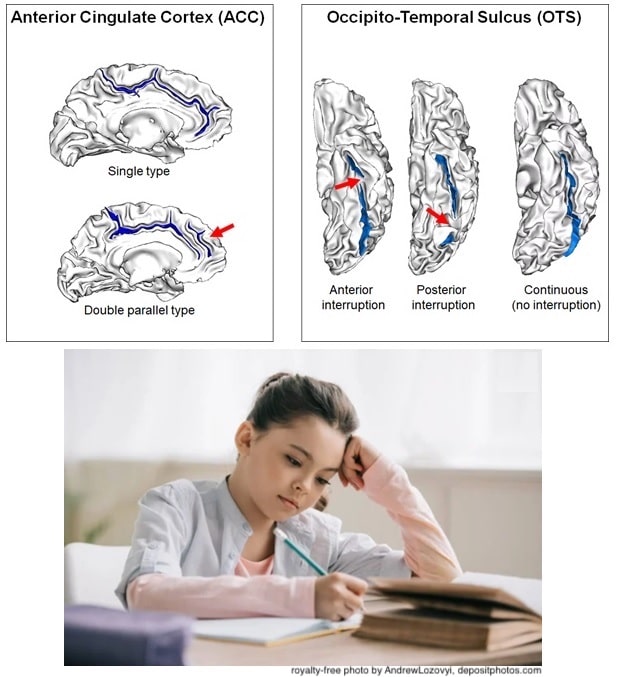
The folding patterns of various sulci were measured in structural MRI scans from children (ages 8–11) and adults (ages 20–40). In both groups, variations in the occipito-temporal sulcus were associated with reading and writing scores. Also in both groups, asymmetry of the anterior cinculate cortex was specifically linked to graphomotor performance, highlighting the role of this structure in writing development and practice. Sulcal patterns are established prenatally and remain stable over time. Thus, early brain development may contribute differences in literacy, alongside the neuroplastic effects of education, learning experiences, and socioeconomic factors.
Arnaud Cachia, Charlotte Dupont, Sarah Palmis, Iris Menu, Guillaume Auzias, Julien Sein, Olivier Coulon, and Marieke Longcamp.
The Sulcal Patterns of the Occipito-Temporal and Anterior Cingulate Cortices Influence Reading and Writing in Children and Adults.
2025. Cerebral Cortex 35 (6): bhaf145. — @HAL
The Sulcal Patterns of the Occipito-Temporal and Anterior Cingulate Cortices Influence Reading and Writing in Children and Adults.
2025. Cerebral Cortex 35 (6): bhaf145. — @HAL
